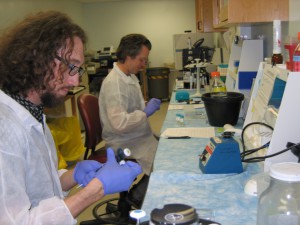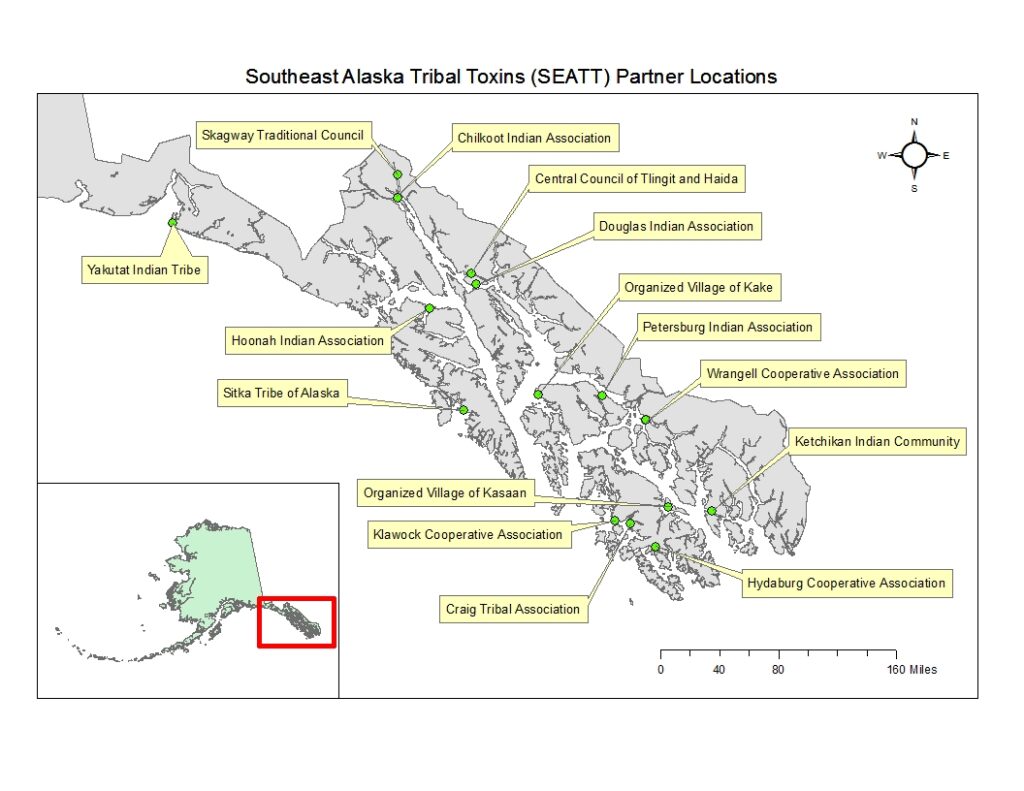NCCOS scientists provided training and technical guidance to scientific staff of the Sitka Tribe of Alaska Environmental Regulatory Laboratory (STAERL) on the extraction and detection of Paralytic Shellfish Toxins (PST). The NCCOS-developed receptor binding assay being taught, an Interstate Shellfish Sanitation Conference (ISSC) accepted method, can help secure the food supply against these potent toxins.

In response to regional PST poisonings, the Southeast Alaska Tribal Ocean Research (SEATOR) Southeast Alaska Tribal Toxins partnership (SEATT) was formed in 2013 to mitigate the threat of toxic shellfish consumption from traditional subsistence shellfish harvesting. Following the previous training of tribal partners using Phytoplankton Monitoring Network methods, each partner now monitors for potential PST producing algae and collects shellfish samples for algal toxin analysis. STAERL will serve as a regional testing laboratory for the fourteen Tribal areas of southeast Alaska. Results of algal toxin analyses will be communicated to tribal partners for each to make informed decisions regarding consumption of traditional food resources.
Training of STAERL laboratory personnel in shellfish toxin analysis is a multi-year project funded by the EPA Indian General Assistance Program and an Administration for Native Americans, Environmental Regulatory Enhancement, with the goal to have a certified laboratory for algal toxin testing by 2017. This is part of a larger NCCOS effort to develop and transition tools to prevent, control, or mitigate the occurrence of harmful algal blooms (HABs) and their impacts.

The tribes include: Skagway Traditional Council, Yakutat Indian Tribe, Chilkoot Indian Association, Central Council of Tlingit and Haida, Douglas Indian Association, Organized Village of Kake, Petersburg Indian Association, Ketchikan Indian Community, Hydaburg Cooperative Association, Craig Tribal Association, Klawock Cooperative Association, Organized Village of Kasaan, Hoonhah Indian Association, and Sitka Tribe of Alaska.
For more information, contact Tod Leighfield or Steve Morton.
